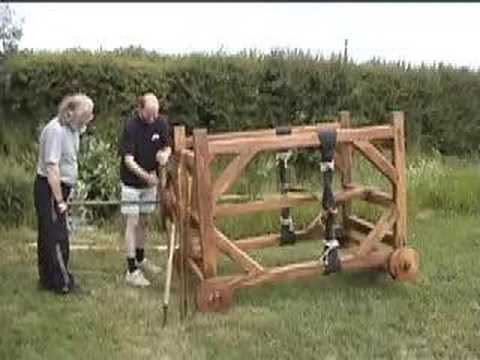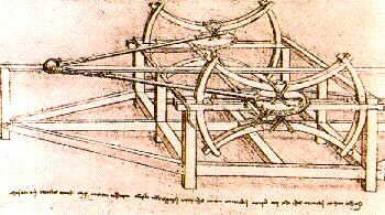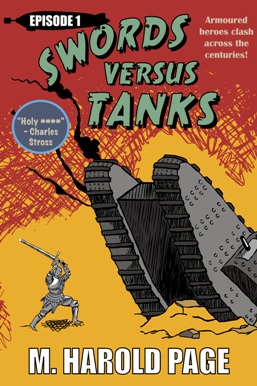Springald! The Medieval Eighty-Eight

The springald looks quaint in the 14th century illustration – a flimsy looking box frame served by two oddly bendy crewmen.

However, at the battle of Mons-en-Pevele in 1304, a pair of French springalds “destroyed everything within range” — and that range could be 300 m — until the enemy overran them and hacked it up.
According to the Royal Armouries Springalds and Great Crossbows (the main source for this article), a springald bolt could weigh 1.4kg, and impacted with an estimated energy of 1782 Joules, that’s about twenty times that of a regular crossbow, nearly three times that of a Magnum pistol, and a bit more than an impact from an AK47 round (source)!
No wonder, then that the chronicler Froissart describes one such terrible missile passing right through a man and out the other side!

Even the new plate wasn’t safe — there is archaeological evidence of steel doughnuts wrapped around the tip as an anti-ricochet device. There are also claims that they could be used as a kind of mortar, lobbing explosive petards — Conrad Keyser, in around 1400 describes such a missile as killing men and destroying houses.
However, the springald is far less convenient than the gunpowder equivalent. Being of wood and skeins of hair, it doesn’t like damp weather, really doesn’t like being rained on, and is vulnerable to hits from other weapons.
That fragility — more than the estimated 15kg weight — meant that springalds saw little use on the battlefield.
Instead, springalds were usually mounted on fixed defences, typically on gatehouses, such as at Cologne and Hamburg, either on top under a roof with maximum range, or down at ground level behind big shooting slits so they could skewer ranks of attackers rash enough to rush the entrance.
The springald’s heyday was brief. Manuscripts first mention them in the 13th century, and by the end of the 14th they had almost fallen out of use. Guns were simply cheaper and easier to maintain.

However, in the Westerland of my Swords Versus Tanks series, arrow charms and rune-etched armour render gunpowder weapons ineffective. So when my Sir Ranulph Dacre holds his castle against tank attack, he relies on springalds to decimate the oncoming invaders:
The leading ironclad crushed an armoured corpse and splintered a half-fallen mantlet.
Ranulph’s pulse quickened. “Wait for it…” The words came out as a croak. He loosened Steelcutter in its belt ring, braced for the pain in his throat and tried again. “Wait for it, gentlemen! I want them all!”
“In range, Milord!”
Ranulph raised his ancestral sword high and bellowed, “For Dacre and for Albrecht!”
Along the wall towers, hatches slammed open, revealing the boxy-framed springalds to the attackers. Torsion-driven arms thumped. Strings thrummed. A dozen three-foot bolts whirred out across the corpse-strewn Cattle Market, each of them rune-etched.
If the Invaders had more powers than just cunning artifice, Ranulph was about to find out.
Need I add that the springald bolts have rune-etched heads? How will they do against WWI-style tanks?
M Harold Page has several franchise novels in print. You can download Swords Versus Tanks 1: Armoured heroes clash across the centuries! and Swords Versus Tanks 2: Vikings battle Zeppelins while forbidden desires spark! from Amazon.